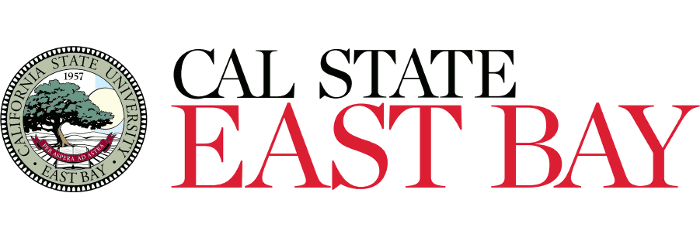Difference Between CPT and OPT?
6 mins read 3088 Views
By Prabhadri Suman|Updated On - 2023-01-25 06:51:55
The difference between CPT and OPT is an important question for international students before finding an internship or job. Internships and jobs with top companies can be difficult to obtain due to complex immigration regulations and rules for international workers.

Topics Covered:
- What’s the Difference Between CPT and OPT?
- What is CPT?
- What is OPT?
It is possible for international students to engage in meaningful, practical work in the US in a variety of ways. Students can gain valuable experience, typically through internships and job opportunities, by applying what they have learned in their programs to real-world organizations.
Every student traveling to the US for academic purposes wonders about the employment chances that are offered there. Any international student studying in the US has the choice between CPT and OPT. OPT is for post-study work, while CPT is for internships. However, there is a lot of misunderstanding about these programs among the students. As both of these have really similar regulations, confusion is likely to occur. Here are some differences between CPT and OPT.
What’s the Difference Between CPT and OPT?
The main difference between CPT and OPT is their eligibility periods and types of work allowed. CPT must be completed before graduation, while OPT can be completed either before or after graduation. During CPT employment, students work in a paid or unpaid internship, practicum, or cooperative (co-op) education program as part of their major curriculum. Your major must require CPT, and if it is not, you must receive course credit. There are only a few employers who participate in CPT. Alternatively, OPT does not require course credit and allows work, not an internship or co-op.
| CPT | OPT |
| An F-1 students may use CPT to work for a company to get experience before graduating. | OPT enables an F-1 student to obtain expertise in the same field after graduating. |
| The degree requirements for candidates include working on CPT. | OPT has nothing to do with a candidate's educational requirements |
| There is no application fee for CPT. | An application fee must be paid by a student on OPT. |
| CPT is available for up to 12 months. | The 12-month OPT period may be extended for an additional 24-month period. |
| The student is not granted an EAD by USCIS during CPT. | After receiving OPT approval, the student working on OPT will receive an EAD from USCIS. |
| CPT can be done either part-time or full-time and is often done for 20 hours per week during the academic year and 40 hours per week over the summer. | After graduation, OPT is typically pursued full-time. |
What is CPT?
CPT stands for Curricular Practical Training. For F-1 international students, curricular practical training (CPT) is a temporary form of employment authorization. Students who participate in CPT might train in their primary subject of study or do an internship in it. Additionally, it enables students to experience amazing things away from the university. The following requirements must be met for CPT internships: a degree requirement or a course requirement.
To graduate and earn your degree, many majors require you to complete an internship or work experience, also known as a CPT. You could be required to participate in an internship or work experience as part of the course requirements if you want to get a grade.
Types of CPT
Part-time and full-time training are both options for curricular practical training. If your application for part-time CPT is accepted, you are permitted to work a maximum of 20 hours per week. You may work more than 20 hours a week if you are granted full-time CPT.
If you complete 12 months of full-time CPT while a student, you will not be qualified for OPT. You must definitely bear this in mind when deciding between CPT and OPT. Additionally, keep in mind that CPT will not accept independent studies.
Need help in studying abroad?
What is OPT?
OPT stands for Optional Practical Training. F-1 international students who maintain their status have the option to apply for 12 months of optional practical training (OPT) if they are qualified. OPT offers practical job experience connected to your major of choice.
Once your degree is over, you can continue to work under OPT. You will be sent an Employment Authorization Document (EAD) if you are accepted. You need an EAD card in order to be able to work legally in the US.
All information must be reported by accepted students to the Student and Exchange Visitor Program. For 12 months of OPT at each educational level, you may apply.
Types of OPT
Optional Practical Training (OPT) consists of three types: STEM OPT Extension, Post-Completion OPT, and Pre-Completion OPT. Pre-completion OPT refers to the time before the end of your program. Your twelve months of OPT eligibility will be reduced by the amount of that time. Post-completion OPT, which starts after you earn your degree, is preferred by the majority of students. Some STEM majors can extend their post-completion OPT for a further 24 months.
Keeping informed and doing everything in a timely manner is essential for F-1 international students. The difference between OPT and CPT can be confusing, but it can be an amazing opportunity for your career. International students have the opportunity to take CPT and OPT, so make the most of them. Take your time and enjoy the experience!
Hopefully, you now understand the difference between CPT and OPT. If you have more questions about studying, living, or working abroad, make sure you connect with the Edmissions team at edmissions.com, who will be able to guide you.
Feel free to reach our Edmissions specialists at [email protected].
For a quick overview related to study abroad, click here
Latest Blog Posts
Trending Posts
Popular Colleges to Study Abroad
Top Study Abroad Exams
Popular Universities to Study Abroad
- University of Waterloo
Waterloo
- University Canada West
Vancouver
- University of Windsor
Windsor
- Cape Breton University
Sydney
- Dalhusie University
Halifax
- Carleton University
Ottawa
- University of Ottawa
Ottawa
- University of Guelph
Guelph
- Explore more colleges in Canada
- University of New Haven
West Haven
- Kent State University
Kent
- Wright State University
Dayon
- San Jose State University
West Haven
- Clark University
Worcester
- Rowan University
Glassboro
- Golden Gate University
San Francisco
- Arkansas
San Francisco
- Explore more colleges in USA
- Coventry University
Coventry
- University of Birminghame
Birminghame
- De Montfort University
Leicester
- Cardiff University
Cardiff
- BPP University
London
- University of West London
London
- University of Nottingham
Nottingham
- University of Warwick
Coventry
- Explore more colleges in UK
- Auckland Institute Of Studies
Auckland
- Massey University - Auckland Campus
Albany
- Eastern Institute of Technology - Auckland Campus
Auckland
- NorthTec - Auckland Campus
Auckland
- Massey University - Manawatu Campus
Palmerston North
- University of West London
London
- Wellington Institute of Technology (WelTec) - Petone Campus
Lower Hutt
- Otago Polytechnic - Dunedin Campus
Dunedin
- Explore more colleges in New Zealand
- Chandigarh University
Mohali
- Parul University
Vadodara
- Sharda University
Greater Noida
- Jain University
Bangalore
- Bennett University
Greater Noida
- Lovely Professional University
Phagwara
- Chitkara University
Rajpura
- Brainware University
Kolkata
- Explore more colleges in India
- Abu Dhabi University
Abu Dhabi
- Gulf Medical University
Ajman
- New York University
Abu Dhabi
- Emirates Aviation University
Dubai
- Higher Colleges of Technology
Dubai
- British University in Dubai
Dubai
- Al Ghurair University
Dubai
- American University in the Emirates
Dubai
- Rochester Institute Of Technology Dubai
Dubai
- Emirates Academy of Hospitality Management
Dubai
- American University of Ras Al Khaimah
Ras Al Khaimah
- Explore more colleges in UAE
- Ras Al Khaimah Medical and Health Sciences University
Ras Al Khaimah
Search, Shortlist, Apply and get accepted! It’s that Simple to pursue your dream to Study abroad with Edmissions. Our team of experts provide you the right guidance that helps you to take admission in your dream college in countries like Canada, the USA, the UK
© 2021-2024 Edmissions - All rights reserved.
TALK TO OUR EXPERTS











